Varieties of air conditioners and split systems
Modern types of air conditioning systems are divided into various categories and subcategories by purpose and type of construction. An abundance of species is not a marketing move at all, a wide choice will allow you to choose an air conditioner or air conditioning system that fully meets the needs of the user.
Content
general information
Classification of air conditioners begins with the appointment or place of use of the device. Initially, all modifications are divided into:
- household;
- semi-industrial;
- industrial (manufacturing).
In class household appliances (RAC) include all split and multi-split systems, the power of which does not exceed 5 kW - these are the air conditioners recommended for use in an office or apartment of a small area.The advantages of such systems are not only in an acceptable cost: their external performance does not harm the interior, and operation does not cause difficulties.
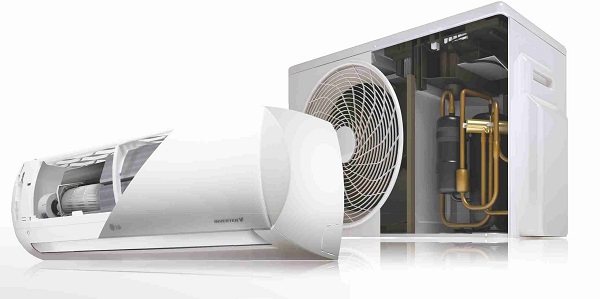
Semi-industrial category (PAC) includes split-systems of all kinds, with a capacity of at least 5 kW. Air-conditioning systems also belong to this class, when several internal modules of any model, including duct, are connected to one external unit.
It is rational to install devices of this class in private homes, summer cottages, adjacent workrooms or large apartments.
The average power of the external module will allow you to cope with the maintenance of several rooms, offices or large premises without loss of efficiency. The external unit is mounted on the facade, or installed on the roof of the building, if it is technically possible.

Production or industrial group contains all versions of channel systems more powerful than 30 kW, as well as cabinet units of various capacities. The equipment with such characteristics is intended for large areas - warehouses, work shops, exhibition halls, where not the external performance of the system, but its performance plays an important role.

Variety of air conditioning systems
Varieties of air conditioners contain many species and subspecies, which often leads to confusion. It is optimal to systematize all this diversity by type of installation, to consider options for designing air conditioning systems.
It is important to understand the principle of operation and the purpose of various modifications. The recommendations of specialists are based on the rational use of air conditioning systems, which increases their service life and guarantees the expected result.
Structurally, devices are divided into two main categories:
- single-block (monoblock);
- split systems.
Single Block Air Conditioners - This is a single unit that transmits air from the room to the street. In some cases a flexible hose is connected to the device for the air vent. These are noisy units of large sizes, depending on the modification, they are installed in the window opening or used for production areas.
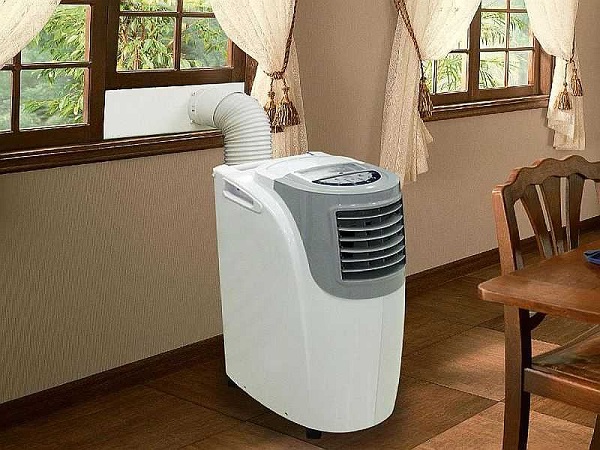
Split system - is a pair of indoor and outdoor modules. Inside the outdoor unit are the main sources of background noise - the fan and the compressor. It is mounted outside, most often on the facade of the building.The internal part of the system is connected to the outer several pipes, filters are located in its case, and, depending on the modification, control buttons and temperature sensors can also be located here.
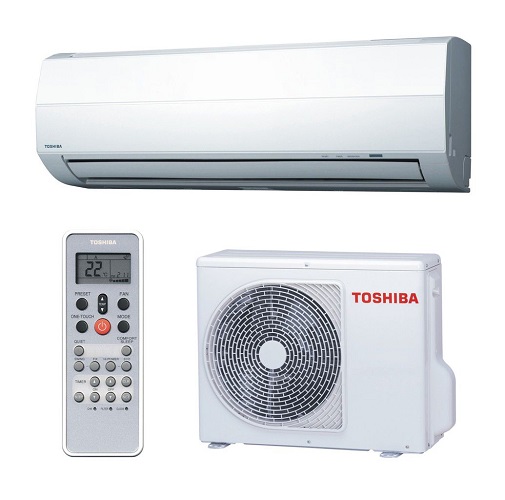
Split systems specification
Split systems or multi-systems are not a specific model, but a whole class of air-conditioning equipment, internal modules can be of any type.
All types of split systems due to low cost and simple installation and operation are widespread among the population and business. They are used at home, set in administrative or semi-industrial premises of different sizes. The advantage of the two-block design is the ease of operation, the aesthetic appearance of the indoor units, as well as in comfort, because they are virtually silent.
Despite the fact that only specialized organizations are engaged in system maintenance, the high demand for these services guarantees a low cost of work or repair.
What are the split systems:
- standard;
- inverter;
- multi system.
Standard systems - This is a simple two-block design.Each pair of modules is connected to each other by a freon line of two to three tubes. The systems are easy to use, maintain a constant temperature by alternating on and off.
Inverter models differ in the principle of work - this technique maintains the temperature set by the user by changing the frequency of the compressor. Simply put, the system allows you to smoothly adjust the intensity of the air supply, when it reaches a predetermined degree, the air flow rate decreases. The technical feature of the inverter air conditioner does not require regular on / off, which makes it more economical than the classic version by 30 - 35%.

Multi-systems more complex than others in the installation and require special attention in the design. In contrast to the classic air conditioning system, here the external module acts as a pair to 2 - 5 internal, maintaining the set temperature in several rooms at the same time.
The disadvantage of multi-systems is the absolute dependence of all internal modules on one outdoor, where the main and only compressor is installed.If it fails, all rooms will be deprived of cooled air. The second difficulty is the laying of separate highways to each internal module.
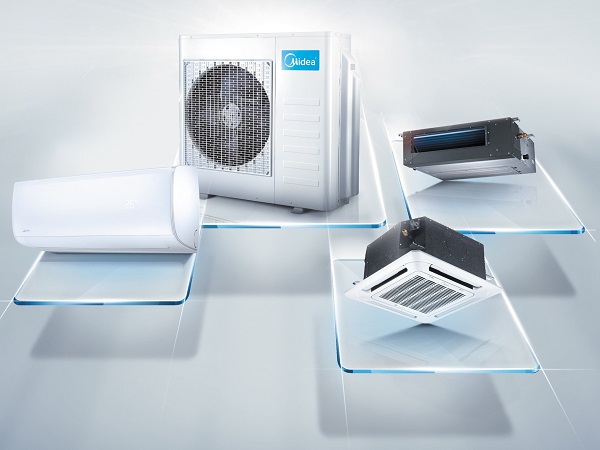
Classification by installation type
For various types of split-systems, one of the modifications of household air conditioners is selected.
- Cassette. For residential or business premises where a suspended ceiling is installed, cassette types of air conditioners will be the best solution. The whole mechanism is located between the concrete ceiling and the ceiling, the air vent occupies one section of the ceiling and is closed by a decorative ventilation grille. Thus, the entire air conditioning system is fully integrated into the ceiling, without occupying the space of the room. The air flow can have two or four directions, or be distributed through 360 °.
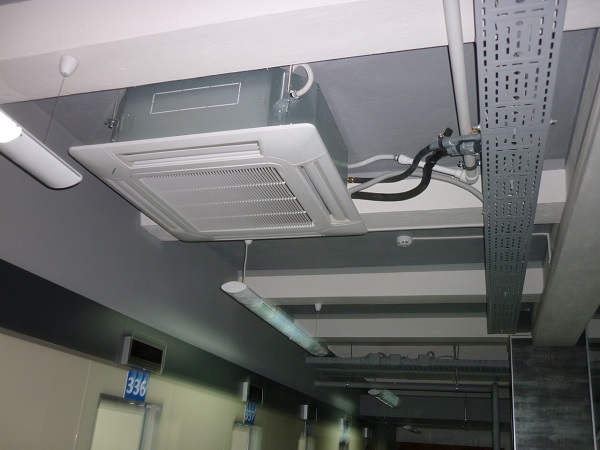
- Wall mounted. A small panel (internal module) is mounted at the top of the wall, not taking up much space. Control is carried out using a conventional remote control. The external module of the system is mounted below the window to provide access to the mechanism for scheduled maintenance or repair.
- Ducts. Systems of this type, similarly cassette, mounted behind a suspended ceiling.From the main unit, there are conduits to the internal modules, with a good supply of power, the system is able to serve several rooms at once. In order to set different temperatures in the rooms, an additional electrically operated valve and temperature sensors are installed. The functional models may include not only cooling / heating, but also cleaning the air in the room. Installation of channel systems will require proper design, calculation of the cross section of the air vent, and their installation.
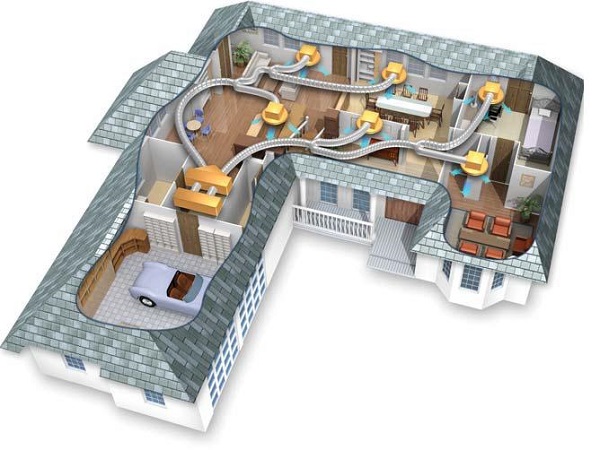
- Wall and ceiling. Types of air conditioners for an apartment or office rooms include wall and ceiling versions. Mount the device on the ceiling or in the lower part of the wall, similar to a heating radiator. These modifications are distinguished by the fact that the flows of air masses do not fall on people, but are evenly distributed throughout the room. There are models where air is supplied in two or four directions, each of which has its own adjustment.
- Column. This type of air conditioner is not suitable for residential or work rooms, their recommended operating area is a large area, such as clubs, storage rooms or exhibition halls.The dimensions of the devices are commensurate with the dimensions of the average refrigerator. Productive and powerful air conditioners need a large installation space.

- VRF systems designed for servicing several dozen rooms at a time and installed mainly in large multi-storey buildings. This is an advanced multi-split system, characterized by high power, high performance and system design. Here, internal modules of any type (air conditioners) are connected to the laid refrigerant line. VRF (VRV) systems are controlled by individual remote controls, from a centralized control panel or via a computer, where system monitoring and planning is available.
Monoblock versions of air conditioners
Single or monoblock types of air conditioners are divided into several types, among which there are models for home and industrial premises. From the outside, the air is forced into the unit while the fan is running, inside it is cooled and directed to the room.
Monoblocks are structurally simpler, which explains their lower cost, but there are also disadvantages: large dimensions and a clear background noise. There are three main types of such conditioners.
- Windowed air conditioners are mounted in the lower part of the window opening or in the wall. This is the most affordable and primitive type of air conditioners, designed for home or work space. Window versions are cheaper than others, but they are not without typical inconveniences in the form of loud noise and large size. During installation in the opening there is a need to reduce the window and the area of the glazing, and installation with double-glazed windows will require large labor costs.
- Mobile air conditioners exist in two forms. Mobile monoblocks are a large module with a flexible air vent, which is installed on a plane, for example, on the floor. Mobile split systems differ from the classical types: the outdoor unit is mounted outside the window and connected to the internal unit using a flexible air vent. In this case, the compressor is located in the internal module, therefore, the level of background noise in the process of work will create discomfort.
- Roof type Air conditioning systems is a large unit installed directly on the roof of a private cottage or building.From the main unit, the system is guided to one or several internal modules (multi-system). These are powerful and productive units, serve for air conditioning of several rooms. Most often, roof models are purchased for organizing VRF / VRV systems, but can also be used for private houses or villas.

The functionality of air conditioners of any type
For air conditioners, the functional model is in second place, after the field of use. If the first models were simple devices, then modern versions can have a fairly solid set of useful options.
Air cooling is a basic function of any air conditioner, but in practice it is required only in the warm season, and for many regions several times a year. Due to the special properties of freon, air conditioners can not only cool but also increase the air temperature. Heating is not present in every model, but this option allows you to use the device in a cool off-season: in spring or autumn.
The most practical choice is air conditioning, which combines cooling and heating functions, but it is important to understandthat such systems are not able to completely replace the heating system.
There are other convenient features that you should pay attention to when choosing an air conditioner. As a rule, their presence is indicated in the description of the device.
- Option "automatic" keeps in memory several last settings and reproduces them by pressing of one button.
- There is another useful option - "night“, The air conditioner switches itself to night mode, reducing the noise of the compressor or adjusting the air temperature.
- Filtration systems - a separate area of any air conditioner for the home. First of all, there are different types of filters: nano-carbon, bio-filters, with silver ions or vitamin C. All this, to a certain extent, increases the use of the device.
Understanding what conditioners are, the user can make the right choice when buying. It is sufficient to clearly define for what purposes and premises a device or air conditioning system is required.

/rating_off.png)











